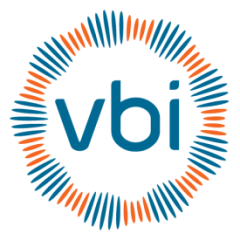
Risks in biotech investment tend to increase as a young company gets closer and closer to its first FDA approval. Trials become more expensive, expectations rise as positive data has already come in from Phase II and earlier studies, considerable investment has already been made and shareholders generally become more and more restless and emotional. Within that general pattern, concluding talks positively with one regulatory agency or another isn’t normally considered a watershed moment for a company. It’s just another check on a laundry list of chores that must get done in order to continue clinical development.
The situation with VBI Vaccines, Inc. (NASDAQ:VBIV) is quite different, and presents a rare opportunity for investors looking for minimal risk with maximal return. VBI recently announced that the European Medical Agency (EMA) has given them clearance to proceed with a pivotal Phase III trial on its flagship third generation hepatitis B vaccine Sci-B-Vac, and that this trial can be used as the basis for a market authorization application. Basically, VBI is now one step closer to approval of Sci-B-Vac in Europe.
Normally, after an announcement like this, risk would escalate since Phase III trials are much more complicated, expensive, and have a higher failure rate than Phase II trials. This is exactly what ended up happening with DynaVax Technologies Corporation (NASDAQ:DVAX) when the FDA rejected its HEPLISAV-B HBV vaccine for safety issues back in November. Shares fell 65% and have not recovered. In the case of Sci-B-Vac by contrast we have a vaccine with a known and proven 100% seroprotection rate, with a rock solid safety profile and data from 300,000 patients to back it up. That patient pool is the size of 300 very large Phase III studies. The chances of this final European Phase III failing then are as close to zero as you can get. Dynavax had nowhere near that amount of data behind HEPLISAV-B.
Another potential major step for Sci-B-Vac is a potential green light from the FDA and Health Canada to proceed with a Phase III program. That, just as well is only a matter of time, and VBI is expecting word from these agencies sometime in the first half of this year.
Utilizing a global approach, VBI should be able to parallel the phase III program and get Sci-B-Vac approved in both North America and Europe at around the same time. If VBI is correct in its estimation of a green light to proceed in the first half of this year, the pivotal program should be well underway before the year is out. With the primary endpoint being seroprotection, which is a measure of HBV antibodies in the blood, we’re not talking about a long drawn out trial here where patients are monitored for HBV infection post injection for years at a time. It’s just a matter of a simple blood test.
From there it becomes a question of marketing and manufacturing. VBI is already preparing the manufacturing front, ramping up its capacity at its main facility in Rehovot, Israel. As for marketing, VBI already has a target patient population in mind. These are the immunocompromised who do not respond well to second generation vaccines like Engerix B from GlaxoSmithKline PLC (NYSE:GSK), as well as first responders and health workers who need faster protection than Engerix B can give them. In this way they will avoid direct competition with GSK and carve out their own markets. Phase IV studies have already shown that 92% of healthy people achieve full HBV seroprotection at month 2 post injection. Engerix B only reaches comparable seroprotection rates to Sci-B-Vac in otherwise healthy people after 6 months. That’s a big 4-month buffer zone for health workers that need protection sooner, especially in Europe, now in the throes of a refugee crisis where most of the new immigrants are not vaccinated against HBV at all.
Rarely in biotech do you have an asset already proven beyond Phase III by two orders of magnitude – 300,000 patients already administered vs. a large 3000-patient pivotal Phase III vaccine trial. Such a unique situation only happened accidentally due to circumstance here. Once the FDA gives its own green light there will be little standing in the way of Sci-B-Vac’s approval and access to a $600M to $1B market opportunity.




